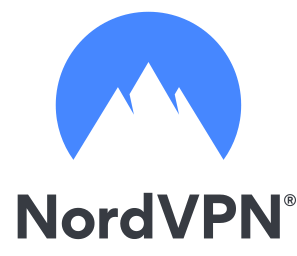Content blocks on the internet serve as a global connector, unifying people across the world. However, when online connections are restricted, it can be extremely frustrating. You may want to watch a popular Australian or British show — like LEGO Masters Australia or Love Island UK — but you live in the United States, and a content block pops up instead.
Moreover, you could urgently need to check Facebook to contact a loved one, but your employer blocks access to social media sites. Alternatively, you might want to play a game that’s banned in your country. Fortunately, there are effective methods to bypass these online restrictions and access blocked content blocks.
Why Does Content Get Blocked?
There are many reasons why certain content comes with restrictions, including government-mandated measures to protect the public from harmful content — such as online gambling, inappropriate child-related content, and security threats. Public policy often restricts access to illegal content, so make sure to check the laws in your particular location. Other situations that may require a work-around include content blocks:
- Geo-restrictions;
- Age restrictions;
- School and work restrictions;
- Censorship.
Entities, such as employers and government institutions, use a variety of tactics to block internet access. Find out how to bypass these restrictions where legally possible.
Use a Virtual Private Network (VPN)
One of the easiest ways to circumvent content blocks is by using a VPN. This software lets you browse the internet anonymously and securely. Sometimes, employers even recommend or require workers to use a VPN for this very reason. Gamers also prefer using VPNs to keep their data and identity safe when gaming online.
Aside from enhanced security, VPNs are worth using simply to bypass content blocks. You can do so in just a few steps:
- Choose a verified VPN service;
- Log in on your preferred device for browsing;
- Choose a location to have your internet connection routed through an IP address in that location;
- Access previously restricted content.
You can download and use VPNs on most devices, including smart TVs for international Netflix streaming. The service also comes with the added perks of data security and optimized internet connection for broad-bandwidth activities like gaming and video editing. VPNs work by creating an encrypted tunnel through which your internet connection runs.
As long as your country doesn’t ban the use of VPNs, this is the best option for accessing restricted content. Furthermore, it’s crucial that the content host hasn’t installed a VPN blocker. Some sites have caught on to the use of VPNs to circumvent rules and, subsequently, blocked them. However, you may be able to fix this issue by finding a savvy VPN or using one of the additional steps mentioned in this article.


Try a Web Proxy
A web proxy is an alternative to a VPN that also masks your IP address. However, if you are looking for the added data privacy, a VPN is your best bet. While both options let you bypass geographic restrictions, VPNs offer an easy-to-use, all-in-one solution. With web proxies, there are three main types:
- HTTP proxies — Used when browsing the web;
- SOCKS proxies — Used on the web, video-streaming apps, and P2P platforms;
- Transparent proxies — Used by companies to monitor online activity and further restrict access to sites.
Web proxies do add a channel in between the internet user and their web destination — but this doesn’t protect you from privacy attacks. Hackers are still able to see sensitive information such as passwords, credit card numbers, and more. Web proxies are generally free or low-cost, but this also leads to slow runtimes and possibly unsafe connections.
Consider Tor
If you are tech-savvy, you’ve most likely heard of Tor. Tor is short for “The Onion Research” Project — a non-profit organization dedicated to researching online freedom and anonymity. Very much against censorship, Tor exists to allow the public to use free software to combat data surveillance and browse the internet at will.
Whether or not you are worried about the legality of torrent downloads, an abundance of conversation surrounding that very topic exists on the Internet. While it is true that criminals use torrenting to visit illegal websites and conduct shady activities, Tor is also used for completely mundane purposes. This includes, but is not limited to:
- Blocking ads and third-party trackers;
- Watching video content in countries with restrictions;
- Cloaking browser activity and preventing browser fingerprinting.
This is made possible by volunteers who run Tor servers, relaying your information so many times over that it is untraceable. Everyone’s activity on Tor looks the same. However, this takes time and slows down servers. Pushback from the National Security Agency has also caused concern surrounding user privacy — and forced Tor to continually update the software.
All of that being said, using Tor isn’t illegal in and of itself. As long as you are conducting legal activities, Tor is a solid way to hide your online identity. This makes it a nice option for getting around content blocks, but it may not be the fastest or most reliable way to do so.
Use a URL Shortener
This option is a bit less straightforward, but it may work in a pinch. URL shorteners take a long website address and shorten it. This allows internet users to bypass any restrictions on websites that have blacklisted domain names. Bitly and TinyURL are two of the most popular link shorteners — but that makes them easy targets to ban.
If the restriction is placed by a company that is privy to URL shorteners, they may also restrict the use of these shorteners. This will negate the usefulness of link shorteners, and you won’t be able to access the site this way. If you use a VPN, this increases your chances of slipping past the blocker undetected — shorter link or not.
Try Switching Protocols, Servers, or Ports
There are, fortunately, ways that VPN providers have found to alleviate the issues caused by VPN blockers. If your particular VPN still can’t make it past the VPN blockers, there are several options to try:
- Switch protocols for the most reliable way to circumvent VPN blocks. The default protocol is OpenVPN, so site and internet service provider (ISP) detection systems look there first. Don’t just switch to the OpenVPN TCP, as this will keep you on the OpenVPN protocol and only make things move slowly. Some VPNs even have special protocols designed to bypass VPN blocks, so look for those when possible.
- Switch servers to change the IP address shown to the sites you’re attempting to access. With a VPN, you’re already connected to a secure server. However, there are often servers that work in specific countries or work to bypass VPN blockers. Check to see if your VPN highlights these server options.
- Change ports to bypass port blocking. This can be done in your VPN settings by switching to port 443 — a port used by more secure, HTTPS sites and, therefore, less detectable by lower-security blockers.
These tricks are in order from the most reliable to the least reliable. If you have done your VPN research, odds are that the VPN offers at least one viable option to get past pesky blocks.
Use a Smart (Domain Name System) DNS
DNS servers are the so-called “tunnel” between your network and your internet destination. This is what allows VPNs to get past content geo-restrictions. A step above using a DNS server is using a Smart DNS.
Top-rated VPNs, like ExpressVPN, are equipped with Smart DNS — a feature that automatically switches your DNS server to native servers or servers better equipped to access geo-restricted content. Only use Smart DNS if you:
- Want to avoid triggering protection systems on sites when visiting from several IP addresses;
- Want to keep access to services that require your original IP address;
- Don’t mind sacrificing IP address privacy.
Smart DNS differs from web proxies in that it doesn’t hide your original IP address. It only reroutes the part of your traffic that includes DNS queries. This means that to access geo-restricted content in this way, you must be open to using your original IP address to do so.
Consider a Secure Shell (SSH) Tunnel
SSH tunnels, in effect, work similarly to VPNs in that they encrypt information sent over networks. However, they offer fewer bells and whistles in exchange for a less complicated setup. People have traditionally used SSH tunnels to remotely access other computer networks. More pertinently, you can combine the SOCKS proxy method with an SSH to accomplish encryption similar to what you would achieve using a VPN.
However, hackers often use SSH tunnels to leave an open backdoor into an internal network. While SSH tunnels will encrypt your connection, they also hide malicious activity.
Someone who is fairly tech-savvy may set up an SSH tunnel, and it can run on an individual network much like a VPN. If you are looking to consistently access restricted content or do so on multiple devices and from multiple locations, a VPN is the better choice. SSH tunnels will work in a pinch — and if you know what you’re doing accessing and encrypting network information.
Turn Your Phone, Tablet, or Laptop Into a Mobile Hotspot
Mobile hotspots, also known as “tethering,” allow you to connect to your device’s data-connection Wi-Fi rather than the public Wi-Fi in a certain location. Usually, smartphones come with a built-in mobile hotspot.
This may help you access any content that is restricted in that particular location or by the carrier or owner of that connection. This option takes you off of public Wi-Fi, as well — masking your location and information.
Mobile hotspots may work for your content-accessing activities if you:
- Are somewhere that has content filtering on their Wi-Fi hotspot;
- Have unlimited data;
- Have a long-lasting phone battery;
- Need to connect 10 or fewer devices;
- Remember to use password protection;
- Don’t need lightning-fast speeds.
Other devices — like a tablet or gaming system — can connect to your mobile hotspot, but the connection is password protected. Your connection is also able to be WPA2 encrypted, keeping it as secure as your home network while out and about. This way, you can stay safe while accessing content that may be restricted by the public Wi-Fi.
You can also use VPNs in conjunction with any of the tools listed above. You can toggle on a VPN when connected to a mobile hotspot for extra geo-restricted content access. Regardless of which way you choose to evade content blocks, be aware of the risks associated with doing so. Know your local laws, and weigh your options to determine which method is right for you.






